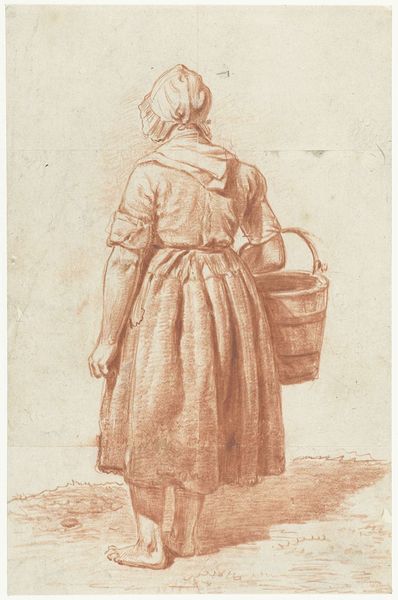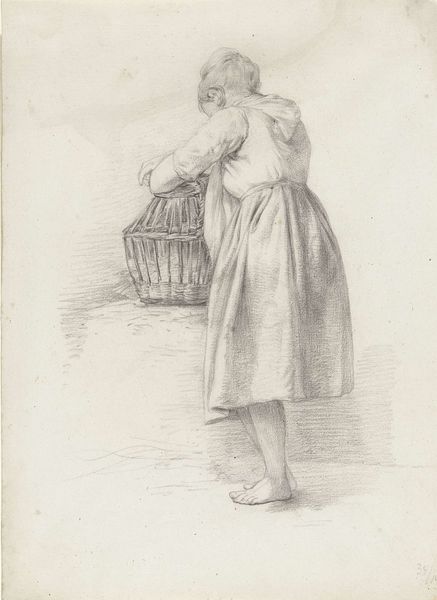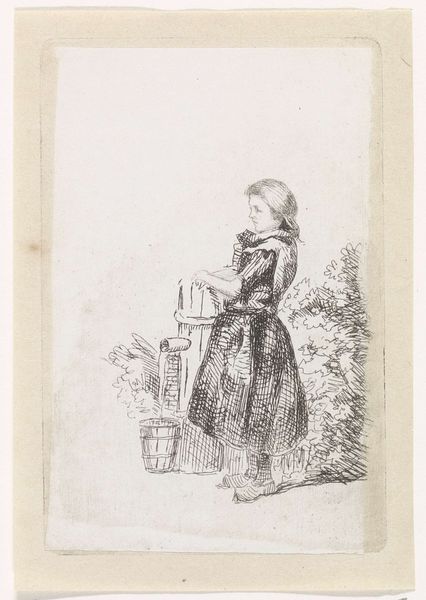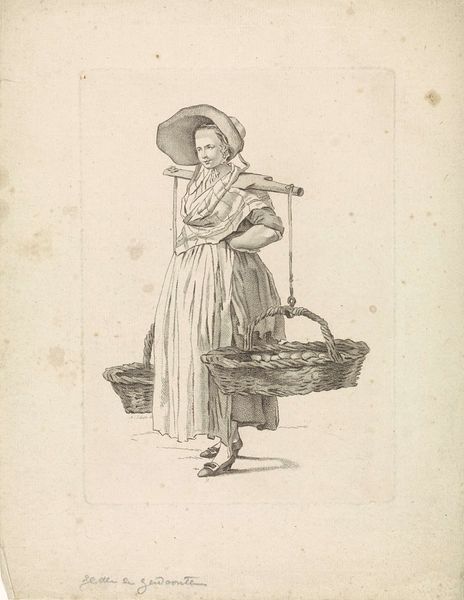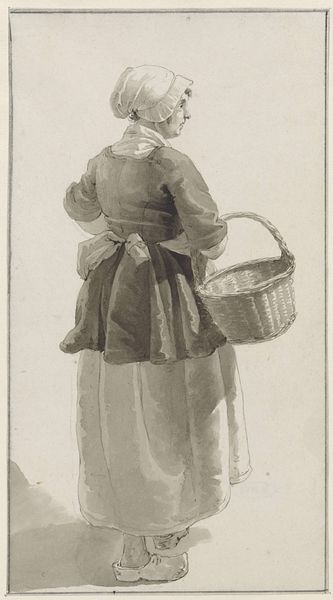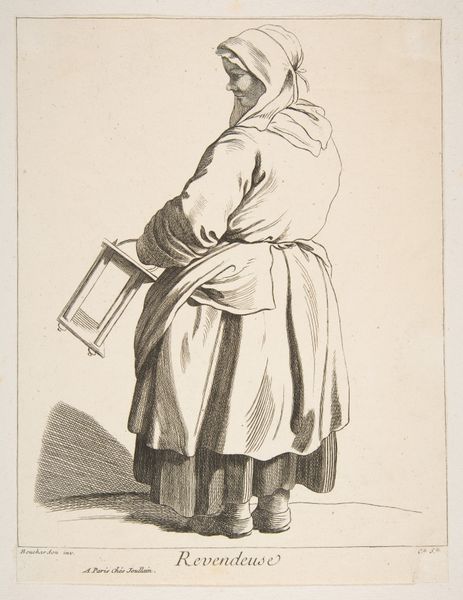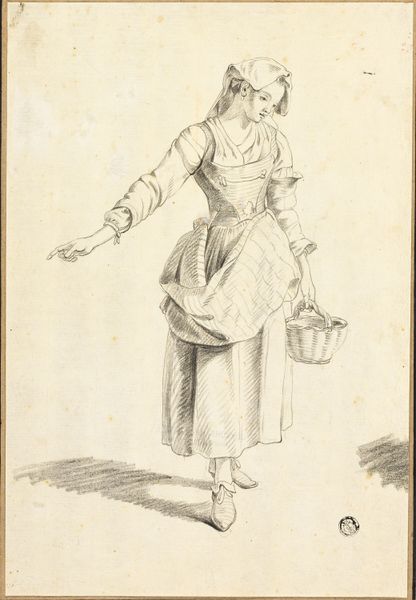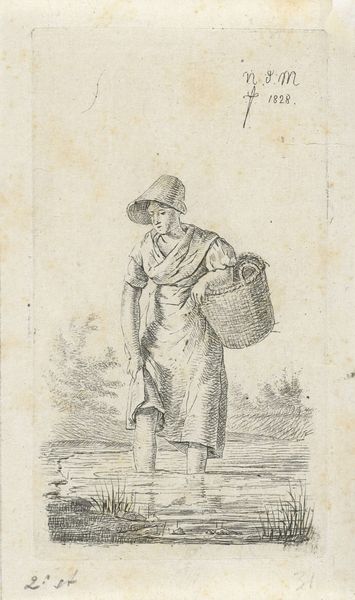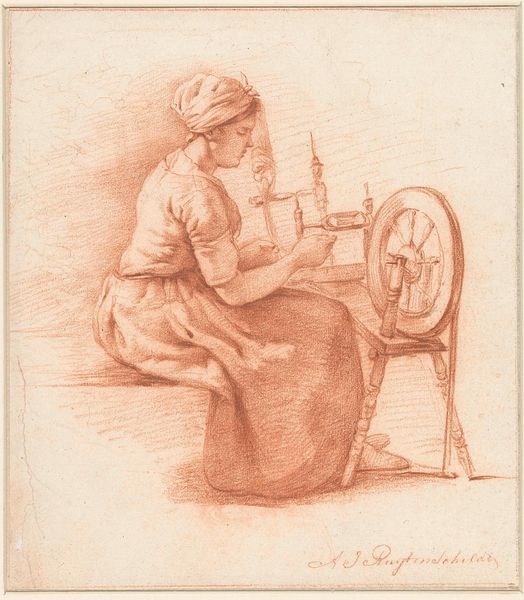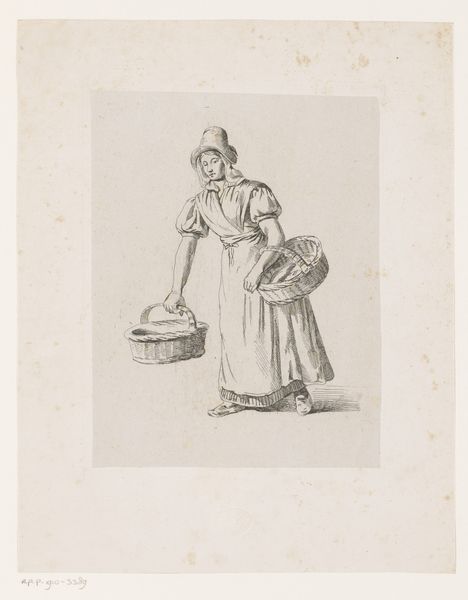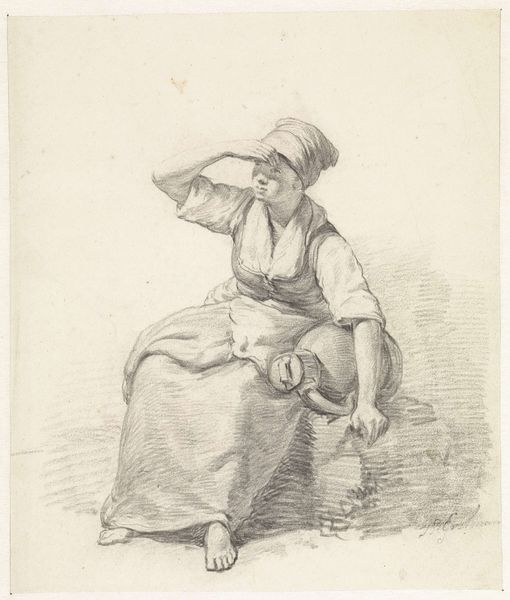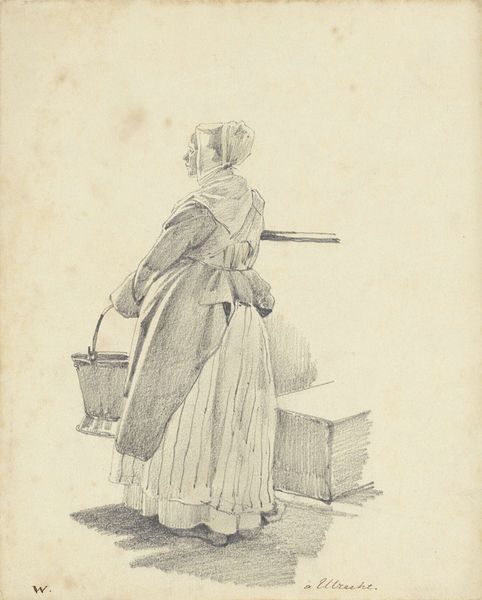
#
pencil drawn
#
toned paper
#
light pencil work
#
pencil sketch
#
charcoal drawing
#
personal sketchbook
#
pencil drawing
#
portrait drawing
#
pencil work
#
watercolour illustration
Dimensions: height 248 mm, width 179 mm
Copyright: Rijks Museum: Open Domain
Curator: Here we have "Standing Girl, by a Gate," a drawing created by Albertus Brondgeest in 1813. It's currently housed at the Rijksmuseum. Editor: My first thought is quiet observation. There’s a fragility to her stance and a delicate, almost faded quality to the drawing itself. Curator: Indeed. This work, likely a study from the artist’s sketchbook, utilizes pencil on toned paper. The choice of medium allows us to really look at the labour, as light pencil work created a nice portrait drawing. The toned paper serves almost as a mid-tone, doesn't it, from which Brondgeest builds form. Editor: The subject’s downcast eyes and the fact that she is barefoot immediately bring to mind concepts of peasantry, even servitude, and a kind of internalized burden. How much of this feeling comes from the knowledge and symbolism attached to depictions of girls during this era? Curator: Fascinating that you focus on the feet, but you are right. Those details were added not to display artistic mastery but social location. Her clothing would not be out of reach if made herself with readily available raw material. These pencil sketch was intended as preparatory notes and would serve more grandiose painting ideas for this artist. Editor: This piece calls up a feeling that almost echoes Jean-Jacques Rousseau’s ideas about the “noble savage”– that her purity of spirit comes from lack of industrial, "modern" experience... though something about the rawness of her toes also points towards something far removed from "noble." Curator: Interesting connection. It brings forward that concept of raw, untamed spirit in art and manufacture, which are both intertwined! Consider what is available around us, and if that’s considered raw, can the art inspired by these readily available raw materials reflect accordingly? Editor: Her entire image is captured by what society deems fit to be useful and accessible for certain castes, if we can phrase the social setting from that lens... Thank you for adding your viewpoint here. Curator: And thank you. By combining process and iconography, the figure speaks.
Comments
No comments
Be the first to comment and join the conversation on the ultimate creative platform.
